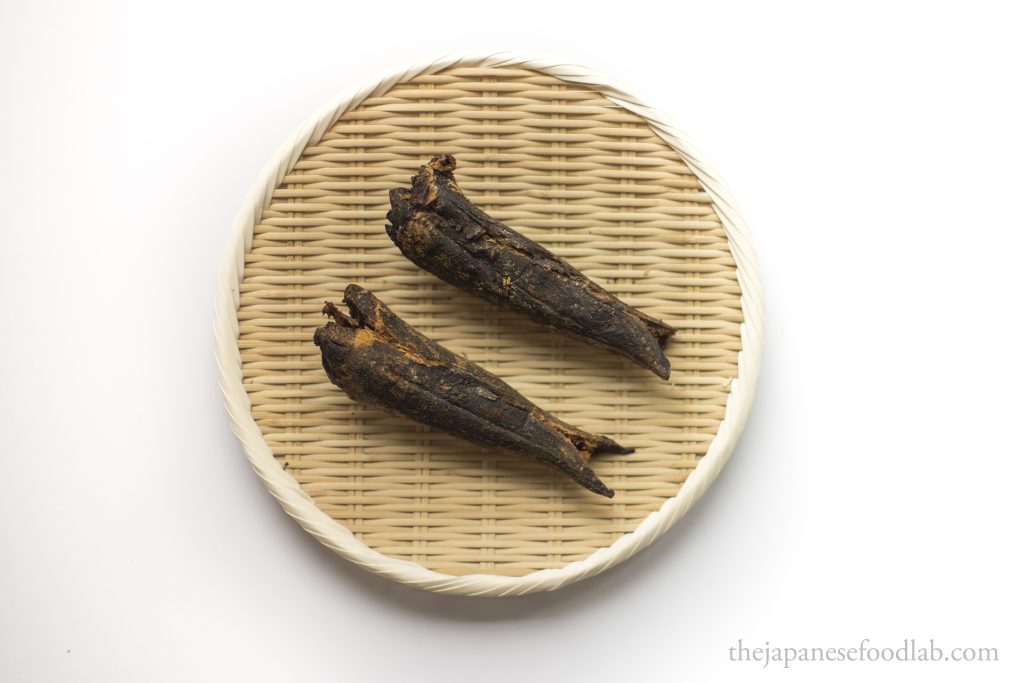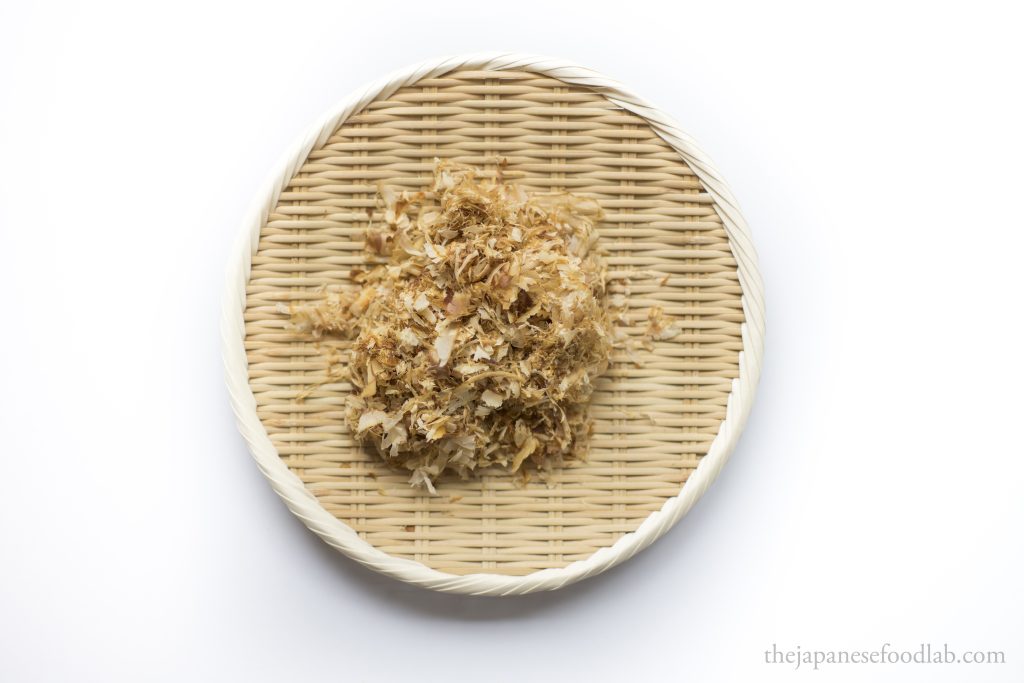This article is part of our series on other kinds of bushi. We recommend reading our article on how katsuobushi is made, how it is shaved, the different parts of katsuobushi and the different kinds of katsuobushi to better understand the terminology used here.

Just like how the preferred fish for making sababushi is gomasaba instead of masaba (true mackerel/マサバ), the preferred fish for making ajibushi is muroaji, not maaji (true horse mackerel/マアジ). This is because maaji and masaba are very high in fat and thus do not smoke and dry well into bushi even though it is the same fat that makes them ideal for sushi and sashimi. Instead, muroaji, a closely related species with a similar taste, is used due to its lower fat content.
Muroajibushi (むろ鯵節) is processed the same way as katsuobushi in that it is cooked, fileted and smoked into the arabushi stage. A small amount is then further fermented to the karebushi stage, though this can be hard to find outside their main production area of Kumamoto Prefecture and Kagoshima Prefecture.
They can be brought in pre-shaved packets, on in entire filets known as split muroajibushi (wari soudabushi/割りむろ鯵節). The word split indicates that the fish had been split into three pieces, the bones and two filets. Smaller fish are processed into round muroajibushi (maru muroajibushi/丸むろ鯵節) where the head is cut off and the internal organs removed through the head cavity. This is done without cutting open the belly or fileting the fish.

The taste of muroajibushi is more acidic than sababushi and is less rich as well. It’s mainly used to make noodle soup in combination with other bushi like sababushi and is never used as a topping. However, when mixed with miso or soy sauce for dishes like stews and nabe, it is used alone. If purchased as thick shavings, boil for around 20 to 30 minutes at a low simmer to make a stock, skimming away impurities.